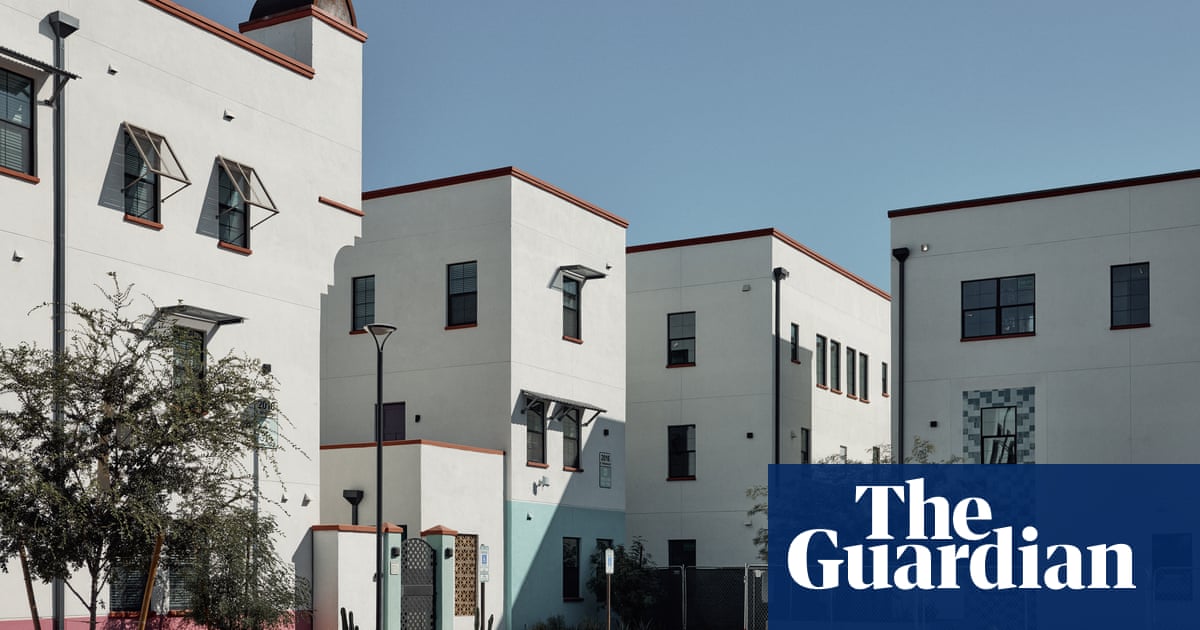It’s nice to see more car free places, but it’s also hard not to criticise the capitalistic hellscape in which your neighbourhood has a CEO
This is the best summary I could come up with:
Johnson has the mien of a tech founder, with his company logo T-shirt and fashionable glasses, and was part of the founding team of OpenDoor, an online real estate business.
The development’s buildings are a Mediterranean sugar-cube white accented with ochre, and are clustered together intimately to create inviting courtyards for social gatherings and paved – not asphalt – “paseos”, a word used in Spanish-speaking parts of the US south-west to denote plazas or walkways for strolling.
There is a small car park, although only for visitors, some disgorged by Waymo, the fleet of Google-owned driverless taxis that eerily cruise around Phoenix with their large cameras and disembodied voices to reassure passengers.
To calm any nerves about making the leap to being car-free, Culdesac has struck deals to offer money off Lyft, the ride-sharing service, and free trips on the light rail that runs past the buildings, as well as on-site electric scooters.
Culdesac can be seen, then, as not only a model for more climate-friendly housing – transportation is the US’s largest source of planet-heating emissions and, studies have shown, suburban sprawl fuels more of the pollution causing the climate crisis – but as a way of somehow stitching back together communities that have become physically, socially and politically riven, lacking a “third place” to congregate other than dislocated homes and workplaces.
Driving to places is so established as a basic norm that deviation from it can seem not only strange, as evidenced by a lack of pedestrian infrastructure that has contributed to a surge in people dying from being hit by cars in recent years, but even somewhat sinister.
The original article contains 1,478 words, the summary contains 271 words. Saved 82%. I’m a bot and I’m open source!
This is also in my city which during summer feels like an actual hellscape. It’s a great idea overall but damn if it’s the last city I’d pick for walking about 40% of the time.
The development’s buildings… are clustered together intimately to create inviting courtyards for social gatherings and paved – not asphalt – “paseos”, a word used in Spanish-speaking parts of the US south-west to denote plazas or walkways for strolling.
Importantly, such an arrangement provides relieving shade from the scorching sun – temperatures in these walkways have been measured at 90F (32C) on days when the pavement outside Culdesac is 120F (48C)
TL;DR: shade is a thing.
Also plants will help cool and reduce humidity in an area. They also make a neighborhood feel more inviting.



